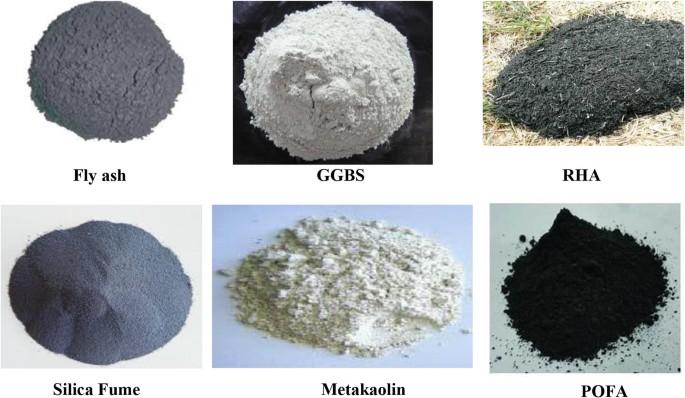Concrete is a cornerstone of modern construction due to its strength, versatility, and durability. However, it is also prone to cracking and brittleness, which can compromise structural integrity over time. To address these issues, fiber-reinforced concrete (FRC) has emerged as a significant advancement. By incorporating various types of fibers into the concrete mix, FRC enhances tensile strength, ductility, and crack resistance. This article explores the different types of fiber-reinforced Concrete Admixtures, their benefits, applications, and their transformative role in contemporary construction practices.
Understanding Fiber-Reinforced Concrete (FRC)
What is Fiber-Reinforced Concrete?
Fiber-reinforced concrete is a composite material that includes fibrous substances to improve its structural performance. These fibers act as a means of transferring loads and stresses within the concrete, helping to control cracking and improving overall toughness.
Types of Fibers Used in FRC
Steel Fibers
Characteristics: Steel fibers are known for their high tensile strength and durability. They are typically used in high-stress applications.
Benefits: Enhanced load-bearing capacity, improved resistance to cracking, and increased impact resistance.
Applications: Industrial floors, heavy-duty pavements, and structural elements subject to high stresses.
Glass Fibers
Characteristics: Glass fibers are lightweight and resistant to corrosion, making them ideal for use in environments where corrosion is a concern.
Benefits: Non-corrosive properties, high tensile strength, and good dimensional stability.
Applications: Decorative concrete, façade panels, and architectural elements
Synthetic Fibers
Characteristics: Synthetic fibers, such as polypropylene and nylon, are used to enhance the concrete's ductility and toughness.
Benefits: Reduced plastic shrinkage, improved impact resistance, and cost-effectiveness.
Applications: Residential slabs, precast concrete, and thin-walled structures.
Natural Fibers
Characteristics: Natural fibers include materials like jute, sisal, and bamboo. They are sustainable and provide adequate reinforcement for various applications.
Benefits: Eco-friendly, cost-effective, and good tensile strength.
Applications: Rural and low-cost housing, temporary structures, and environmentally conscious projects.
Benefits of Fiber-Reinforced Concrete
Enhanced Structural Integrity
FRC significantly enhances the structural integrity of concrete by reducing the likelihood of cracking and improving its load-bearing capacity. The fibers distribute stress more evenly, preventing localized failures and increasing the overall durability of the structure.
Improved Crack Control
One of the primary advantages of FRC is its superior crack control. Fibers bridge the cracks that form during the curing process and under load, reducing the width and spread of cracks. This not only enhances the aesthetic appearance of the concrete but also prolongs its lifespan by preventing the ingress of harmful substances.
Increased Ductility and Toughness
FRC exhibits higher ductility and toughness compared to conventional concrete. This means it can absorb more energy before failing, making it more resistant to dynamic loads such as those caused by earthquakes, vibrations, and impacts. This property is particularly beneficial in seismic zones and for structures subject to heavy traffic and dynamic forces.
Enhanced Durability
The incorporation of fibers improves the durability of concrete by enhancing its resistance to various forms of deterioration, such as freeze-thaw cycles, chemical attacks, and abrasion. This results in longer-lasting structures with lower maintenance requirements.
Versatility and Design Flexibility
Fiber-reinforced concrete offers increased versatility and design flexibility. It can be molded into various shapes and sizes, making it ideal for complex architectural elements and innovative construction designs. The use of different types of fibers allows for customization based on specific project requirements.
Applications of Fiber-Reinforced Concrete
Industrial and Commercial Flooring
In industrial and commercial settings, FRC is commonly used for flooring due to its high load-bearing capacity and resistance to wear and tear. Steel fibers, in particular, are favored for their ability to handle heavy loads and frequent traffic, making them ideal for warehouses, factories, and large retail spaces.
Infrastructure Projects
Fiber-reinforced concrete is widely used in infrastructure projects such as bridges, tunnels, and highways. The enhanced durability and crack resistance provided by FRC ensure that these structures can withstand the rigors of environmental exposure and heavy use, reducing the need for frequent repairs and extending their service life.
Residential Construction
In residential construction, FRC is used for driveways, patios, and foundations. The use of synthetic and natural fibers helps control plastic shrinkage and improves the durability of these structures. Additionally, FRC is used in precast concrete elements such as walls, panels, and roofing tiles, providing strength and durability while reducing construction time.
Architectural and Decorative Concrete
FRC is popular in architectural and decorative applications due to its ability to create intricate designs and shapes. Glass fibers are particularly useful in producing thin, lightweight panels and intricate architectural details that are both strong and aesthetically pleasing.
Marine and Coastal Structures
Marine and coastal structures benefit from the use of FRC due to its enhanced resistance to corrosion and chemical attack. Glass and synthetic fibers are commonly used in these environments to provide durable, long-lasting solutions for seawalls, docks, and offshore platforms.
Conclusion:
Fiber-reinforced concrete has revolutionized the construction industry by addressing the limitations of traditional concrete and enhancing its performance. By incorporating different types of fibers, FRC provides improved crack control, increased durability, enhanced structural integrity, and greater design flexibility. Its applications span a wide range of construction projects, from industrial flooring and infrastructure to residential buildings and decorative elements. As the demand for sustainable, durable, and versatile construction materials continues to grow, fiber-reinforced concrete stands out as a key innovation in modern construction practices. By leveraging the benefits of FRC, builders and engineers can create structures that are not only strong and durable but also capable of withstanding the challenges of time and environmental stresses.

